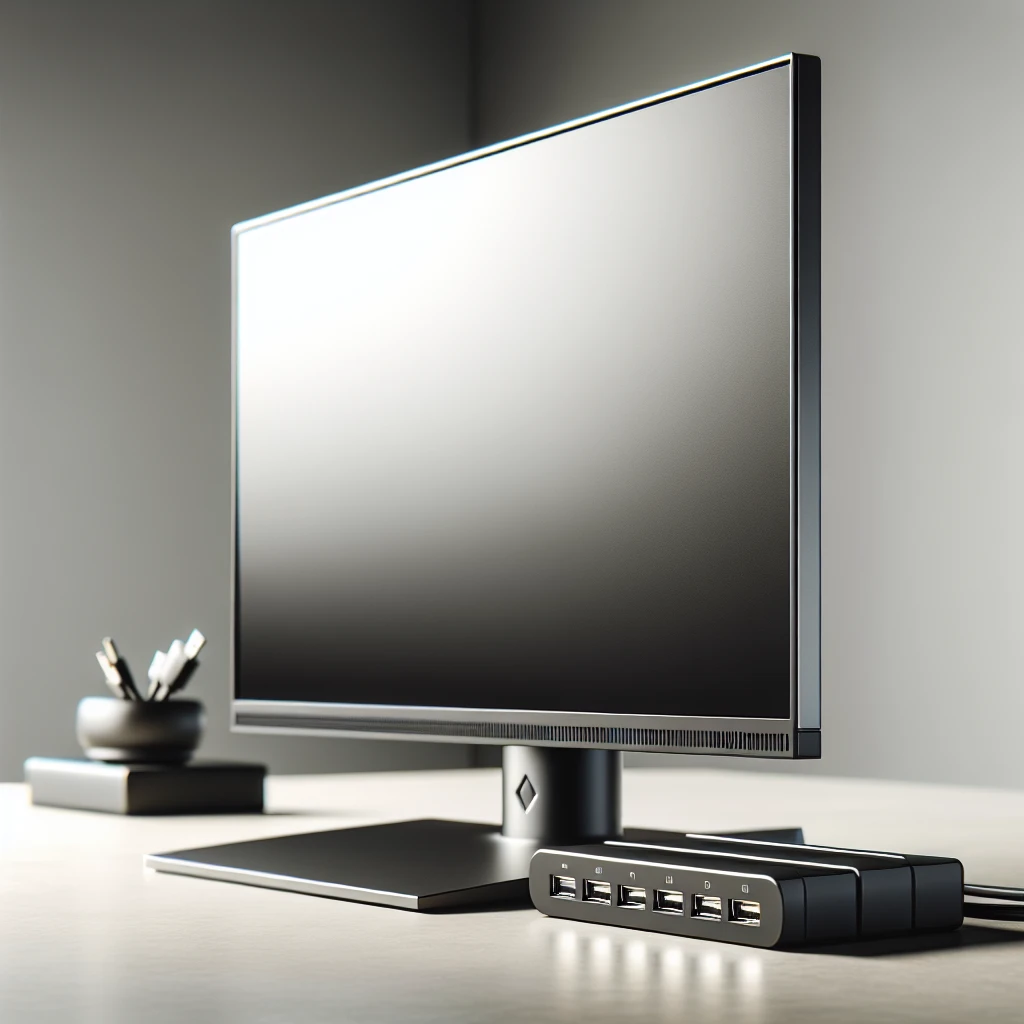Understanding LED Monitors with Built-in USB Hubs
As technology advances, the demand for convenient, multifunctional devices has exponentially increased. One such innovation is the LED monitor with a built-in USB hub. These monitors not only provide stunning visual clarity but also offer easy connectivity options, transforming your workstation into a more efficient and tidy space.
But what exactly are LED monitors with built-in USB hubs, and why should you consider one for your setup? Let’s delve into the details.
What Are LED Monitors with Built-in USB Hubs?
LED monitors are displays that use Light Emitting Diodes (LED) for backlighting, providing vibrant colors, better contrast, and energy efficiency compared to traditional LCD monitors. When these monitors come with built-in USB hubs, they feature integrated USB ports, allowing for seamless connectivity to peripherals like keyboards, mice, external drives, and other USB devices.
Advantages of LED Monitors with Built-in USB Hubs
- Enhanced Connectivity: These monitors simplify connecting multiple devices, reducing cable clutter and improving desktop organization.
- Power Supply: USB hubs can provide power to connected devices, ensuring they remain operational without needing independent power sources.
- Ease of Access: Accessible ports on the monitor save time and effort, especially in setups where the desktop tower is not easily reachable.
- Improved Productivity: Easier access to peripherals can enhance workflow by simplifying the process of connecting and disconnecting devices.
Top Models of LED Monitors with Built-in USB Hubs
Several manufacturers have recognized the demand for such integrated solutions and have developed top-notch models to cater to modern workstations. Below is a detailed comparison of some leading LED monitors featuring built-in USB hubs:
| Model | Screen Size | Resolution | USB Ports | Special Features |
|---|---|---|---|---|
| Dell Ultrasharp U2720Q | 27 inches | 3840 x 2160 | 4 USB 3.0 | 4K UHD, Ergonomic Stand |
| LG 34WK95U | 34 inches | 5120 x 2160 | 2 USB 3.1, 1 USB-C | 5K2K UltraWide, Thunderbolt 3 |
| ASUS ProArt PA32UCX | 32 inches | 3840 x 2160 | 3 USB 3.0, 1 USB-C | HDR, Thunderbolt 3 |
| HP Z27 | 27 inches | 3840 x 2160 | 3 USB 3.0, 1 USB-C | 4K UHD, Minimalist Design |
| BenQ PD3220U | 32 inches | 3840 x 2160 | 2 USB 3.1, 1 USB-C | HDR10, DualView |
Factors to Consider When Choosing an LED Monitor with a Built-in USB Hub
When shopping for an LED monitor with a built-in USB hub, consider the following factors to ensure the monitor meets your needs:
Screen Size and Resolution
The screen size and resolution are crucial for a comfortable viewing experience. Consider what fits your workspace and usage needs. Larger screens with higher resolutions are beneficial for multitasking and professional work.
Number and Type of USB Ports
Check the number and types of USB ports available. Ensure that the monitor provides sufficient ports for all your devices and peripherals. Some advanced monitors may also offer USB-C ports, which support faster data transfer and charging capabilities.
Special Features
Look for additional features that might benefit your workflow. These can include ergonomic stands, HDR support, color accuracy, and advanced connectivity options like Thunderbolt 3.
Price and Warranty
Balance your budget with the features and specifications you need. Also, consider the manufacturer’s warranty to safeguard against potential defects or issues that may arise.
Conclusion
LED monitors with built-in USB hubs are an excellent choice for those looking to simplify their workspace with enhanced connectivity and cable management. These monitors not only provide stunning visuals but also improve productivity by integrating essential connectivity ports directly into the display. By choosing the right model that fits your requirements, you can create a more efficient, organized, and aesthetically pleasing workstation.

